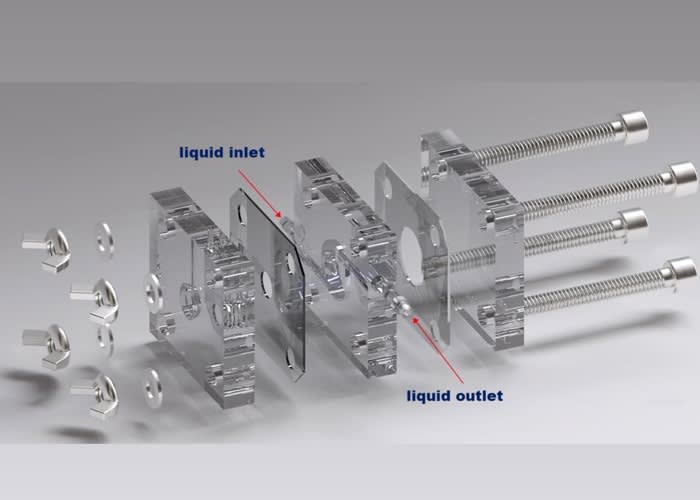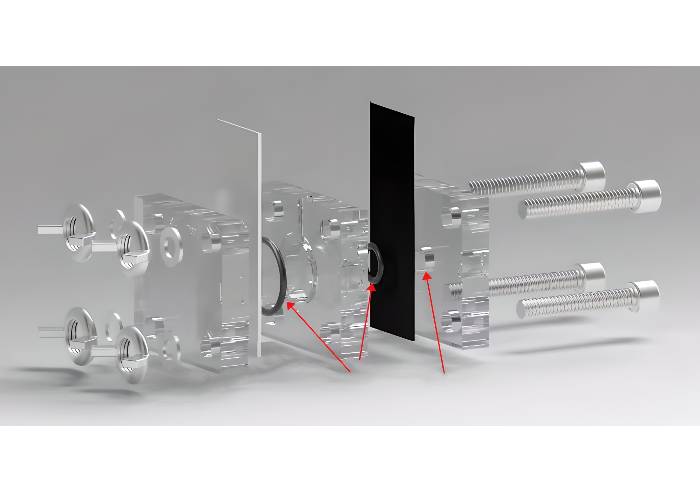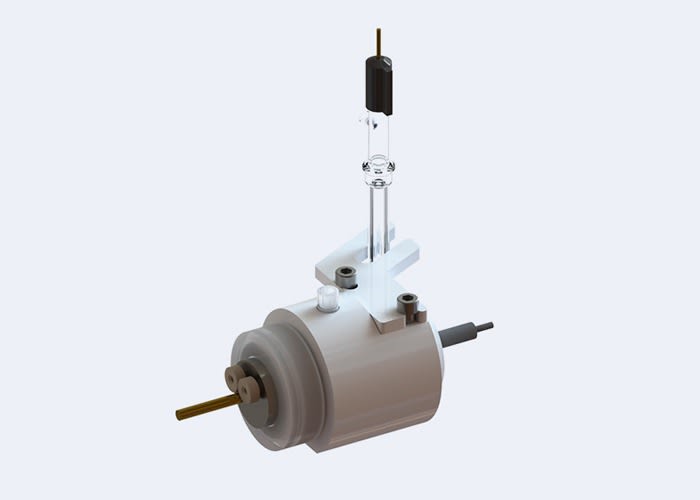
Zinc Air Battery Test Cell
The Zinc Air Battery Test Cell enables metal-air system research using zinc anodes and ambient oxygen cathodes. Stainless steel with PTFE/PEEK insulation, air inlet, and O-ring sealing supports φ16mm electrodes for ORR/OER catalyst and cycle testing.
Description
Principle of Operation
The Zinc Air Battery Test Cell is designed for fundamental and applied research on metal-air electrochemical systems, particularly those utilising zinc as the anode and ambient oxygen as the cathodic reactant. Unlike sealed lithium-ion or solid-state batteries, zinc-air cells rely on oxygen from the atmosphere as the active cathode material, making them energy-dense and environmentally sustainable.
This test cell provides a controlled environment to evaluate electrode reactions, catalytic activity, and discharge performance under laboratory conditions. Oxygen enters through an air diffusion layer on the cathode side, while the zinc electrode undergoes oxidation in the electrolyte. By connecting to a potentiostat or galvanostat, researchers can monitor parameters such as overpotential, oxygen reduction reaction (ORR) efficiency, and charge–discharge stability.
Key Features & Specifications
- Material Composition: High-purity stainless-steel body for mechanical stability; PTFE and PEEK insulation for chemical resistance.
- Electrode Configuration: Designed for zinc anode and gas-diffusion cathode assemblies.
- Airflow Design: Integrated air inlet with adjustable diffusion barrier ensures uniform oxygen supply during testing.
- Sealing System: O-ring sealing prevents electrolyte leakage while maintaining open cathode exposure.
- Electrode Area: Supports disc-type electrodes up to φ16 mm.
- Reusability: Fully disassemblable and easy to clean for repeatable experimental cycles.
- Assembly Environment: Compatible with glovebox use for air-sensitive electrolyte systems (e.g. alkaline or neutral media).
Compatibility
This test cell integrates seamlessly with potentiostats, battery cyclers, and electrochemical impedance analysers for complete characterisation of zinc-air systems. It can also be used in conjunction with in-situ Raman or FTIR spectroscopy to correlate electrochemical behaviour with catalytic surface changes.
Typical Applications
- Zinc-air battery performance evaluation and round-trip efficiency testing.
- Catalyst screening for oxygen reduction and oxygen evolution reactions (ORR/OER).
- Electrolyte formulation studies (alkaline or neutral).
- Durability and cycle-life assessments under ambient or controlled humidity.
- Education and R&D in sustainable and high-energy metal-air systems.
Customer Reviews
Related Product
Explore our precision instruments designed for electrochemical research and energy applications
Still Wondering About Something?
Explore our FAQ for fast, clear answers to the most common questions—available 24/7.






